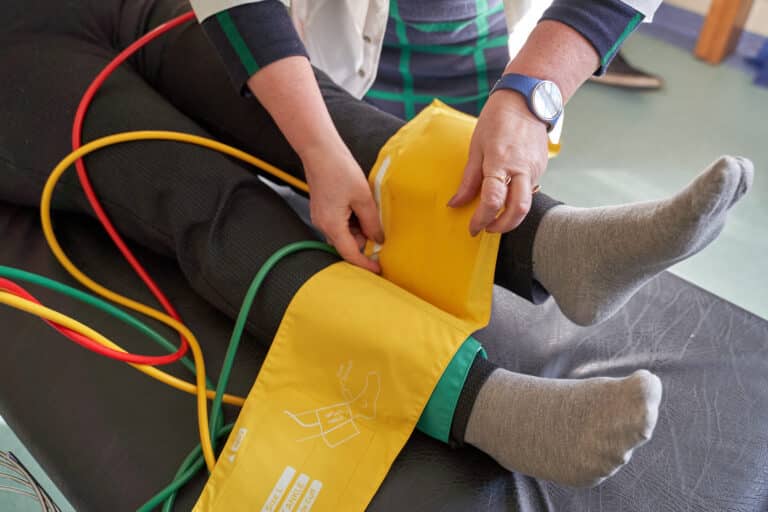A decade ago, most joint replacements, including shoulder replacement, required a hospital stay. That’s no longer the case.
Chicago Health is committed to publishing a diversity of opinions. The opinions expressed in this op-ed article are the author’s own.
In January 2024, the Centers for Medicare & Medicaid Services (CMS) allowed for primary shoulder replacements to be performed in the ambulatory surgery center (ASC) environment.
So why is it “suddenly” safe to perform these major surgeries in an ASC? The answer is multi-faceted: better pain control, less blood loss, smaller prosthetic joints, shorter operating times, and enhanced recovery after surgery (ERAS) protocols. Here’s what to know.
Progress in pain control
In the recent past, surgical pain was exclusively addressed with opioids in strong dosages and volumes. However, this approach sometimes led to serious side effects such as drowsiness, breathing issues, nausea, and vomiting.
We are now using a more modern technique: multimodal pain management. This approach uses two or more drugs and/or interventions — not including opioids — acting by different mechanisms to reduce or eliminate pain. Some of my patients can now have shoulder surgery with limited opioids, which was unheard of even five years ago.
As part of a multimodal approach, patients can receive regional nerve blocks to completely eliminate perioperative pain for a predictable time frame. Combined with other agents and medications, nerve blocks can last beyond 24 hours. Most of my patients are able to go home, get settled, and remain comfortable during their first night of sleep.
New perioperative protocols
Better surgical protocols are also fueling the success of outpatient surgery. For example, the ERAS protocols aim to accelerate surgical recovery. Key elements of ERAS protocols include preoperative counseling, nutrition optimization, early mobilization, and more.
I find ERAS’s approach to fasting especially interesting. When patients are fasting before surgery, their electrolytes and blood sugar (glucose) can become imbalanced, affecting both their response to medication and pain tolerance. Therefore, the ERAS pre-operative protocol instructs patients to consume an electrolyte drink three to four hours prior to surgery. This stabilizes electrolytes prior to the administration of anesthesia.
ERAS protocols set patients up to tolerate anesthesia better, reduce the need for postoperative pain medicine, and tolerate the stress of a surgical procedure. Therefore, many patients can go home within a few hours of surgery.
Advanced surgical techniques
In my more than 30 years of practice, shoulder surgery techniques have improved in leaps and bounds. Today, shoulder entry approaches are more precise than ever. Smaller surgical incisions mean less damage to the healthy muscles, tendons, and ligaments at the surgical site.
At the same time, the invention of smaller, more anatomically correct implants allows for more precise surgeries, shorter operating times, less bone removal, and more strength at the site of surgical repairs.
Technology also plays a role. I can now enter the patient’s specific bone anatomy into a computer program, allowing me to plan a customized surgery for each patient. This approach reduces the number of surgical steps and shortens the time under anesthesia. The combination of more precise techniques, smaller cuts, and pre-op planning translates into a more personalized shoulder replacement with easier recovery.
Minimized blood loss
Ten to 20 years ago, it was common for patients to lose up to a pint of blood during a shoulder replacement. Most of this blood loss was due to cutting bone and tissues as well as the extended time of the surgical procedure. Since then, more refined surgical techniques have led to reduced blood loss during surgery.
Also, it has become routine to use a well-known synthetic derivative of the common amino acid lysine, known as tranexamic acid (TXA), during surgery. This inexpensive medication improves the ability to slow down and stop bleeding. Remarkably, when used during joint replacement surgery, multiple studies have demonstrated the safety of TXA in large populations of patients, including no additional risk of excessive blood clotting.
Into the future of outpatient orthopedic surgery
Today, if you ask one of my patients if they would rather have their procedure in the hospital or a surgery center, I’d estimate that 95% would rather have it in an ASC. I now approach each surgery with the question: “Is there any reason this patient actually requires a traditional hospital visit?” Most do not.
As we continue to explore this new frontier of shoulder surgery, we will no doubt continue to find ways to make it even more effective, efficient, and safe. In the near future, we may be able to safely perform joint replacements almost exclusively in the ASC environment.

Anthony Romeo, MD, is one of the nation’s leading shoulder, elbow, and sports medicine surgeons with more than 27 years of clinical experience. Romeo is the chief medical editor of Orthopedics Today.














